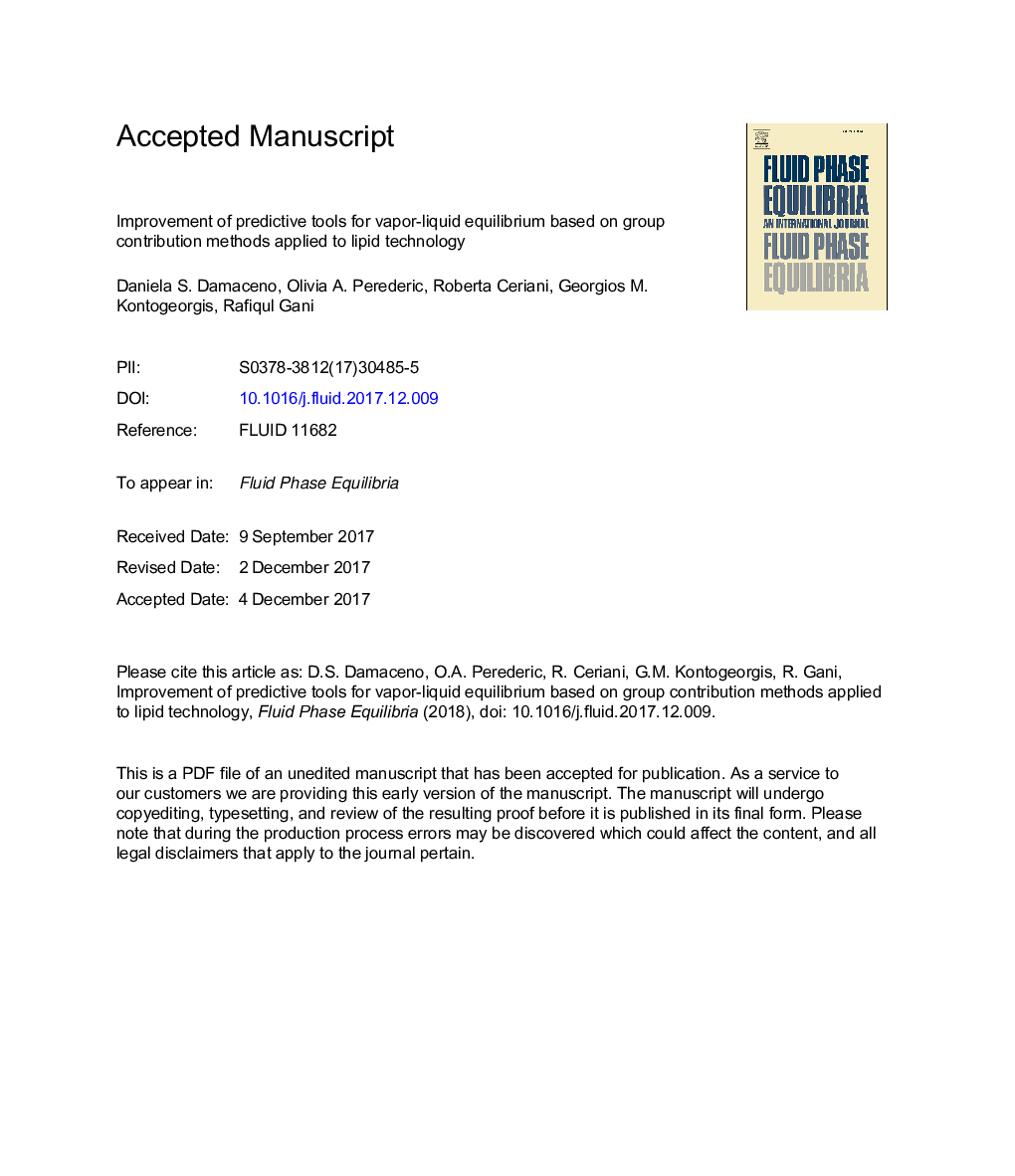| Article ID | Journal | Published Year | Pages | File Type |
|---|---|---|---|---|
| 6619157 | Fluid Phase Equilibria | 2018 | 34 Pages |
Abstract
Predictive methodologies based on group contribution methods, such as UNIFAC, play a very important role in the design, analysis and optimization of separation processes found in oils, fats and biodiesel industries. However, the UNIFAC model has well-known limitations for complex molecular structures that the first-order functional groups are unable to handle. In the particular case of fatty systems these models are not able to adequately predict the non-ideality in the liquid phase. Consequently, a new set of functional groups is proposed to represent the lipid compounds, requiring thereby, new group interaction parameters. In this work, the performance of several UNIFAC variants, the Original-UNIFAC, the Linear-UNIFAC, Modified-UNIFAC and the Dortmund-UNIFAC is compared. The same set of experimental data and the parameter estimation method developed by Perederic et al. (2017) have been used. The database of measured data comes from a special lipids database developed in-house (SPEED Lipids database at KT-consortium, DTU, Denmark). All UNIFAC models using the new lipid-based parameters show, on average, improvements compared to the same models with their published parameters. There are rather small differences between the models and no single model is the best in all cases.
Related Topics
Physical Sciences and Engineering
Chemical Engineering
Chemical Engineering (General)
Authors
Daniela S. Damaceno, Olivia A. Perederic, Roberta Ceriani, Georgios M. Kontogeorgis, Rafiqul Gani,
